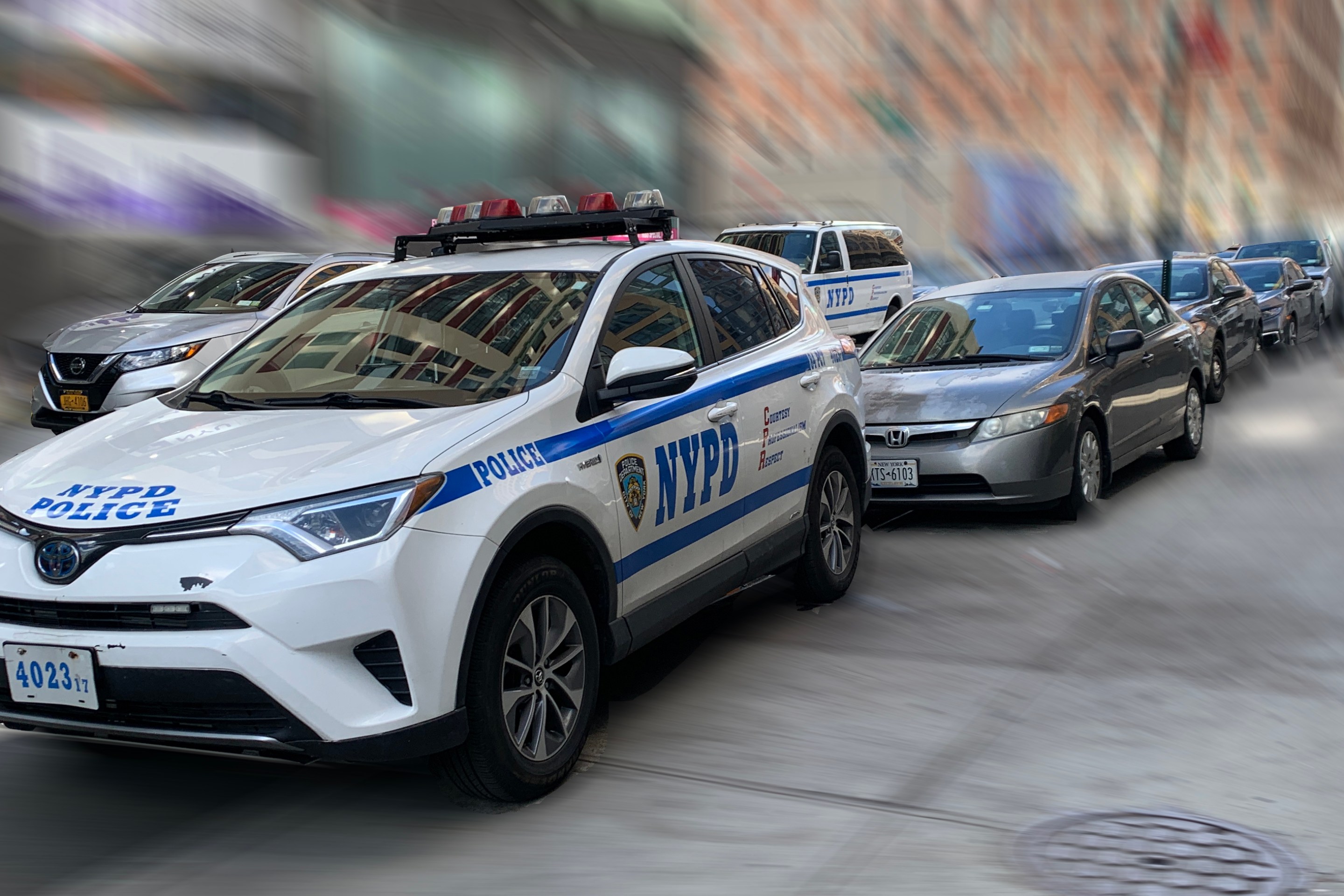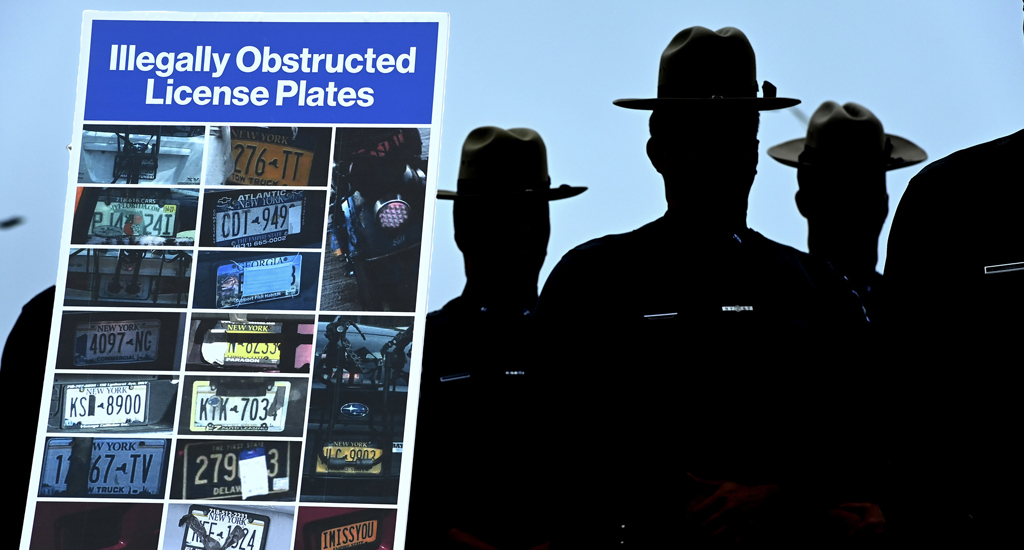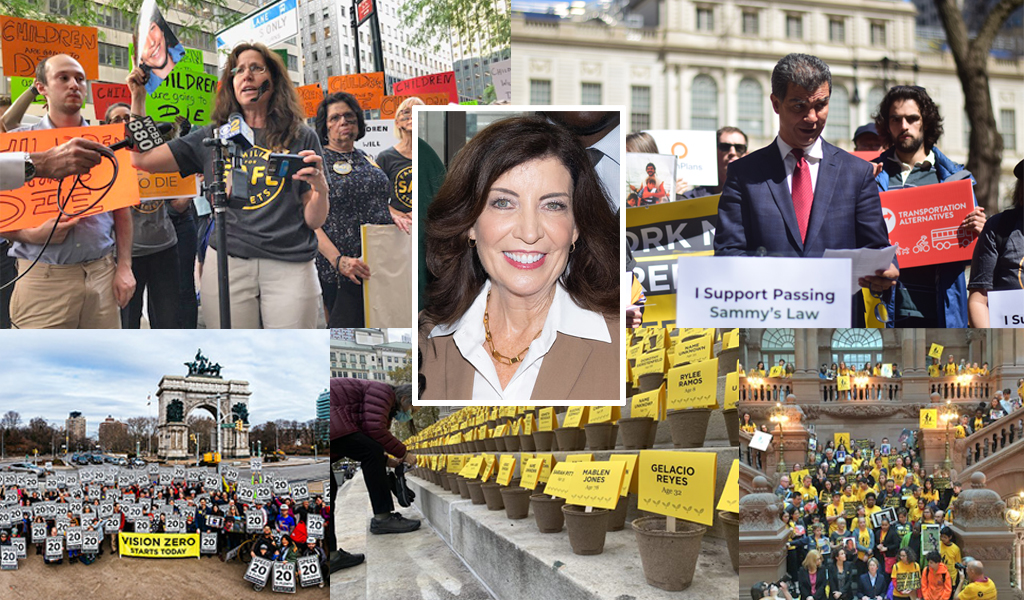Ray Kelly: NYPD Will Retire “Accident” and “Dead or Likely to Die” Rule
1:53 PM EDT on March 11, 2013
NYPD will increase the number of officers assigned to investigate serious traffic crashes, and will revise protocols that denied the possibility of justice to thousands of victims of vehicular violence, according to a letter from Commissioner Ray Kelly to the City Council. In another major shift, the department will stop using the word "accident" to describe traffic crashes, and the Accident Investigation Squad will soon be known as the Collision Investigation Squad.
Under long-standing NYPD procedures, drivers who injured pedestrians and cyclists, and who were sober and remained at the scene, were not investigated unless the victim died or was believed likely to die. This policy undermined or destroyed investigations into an untold number of crashes, including those that took the lives of Stefanos Tsigrimanis and Clara Heyworth. The new standards described by Kelly represent a significant step forward for the department's crash response protocol, and should result in more investigations. However, they will apparently fall short of what is required by state law.
The number of crash investigators -- currently 19 -- will be increased, according to Kelly. The size of the increase is not known, but the Times reported Sunday that NYPD has for months assigned investigators to "dozens" of crashes that would not have warranted investigation under the "dead or likely to die" rule. The Times says "many" of those crashes have resulted in criminal charges.
Those charges could include reckless endangerment or third degree assault, says attorney Steve Vaccaro. Reckless endangerment requires proof that a driver was aware of a risk of seriously injuring someone else, Vaccaro says. "Third degree assault requires a lower level of culpable mental state. It requires that the driver not be aware of the risk, and the failure to perceive the risk was a gross deviation of what a reasonable person would have perceived."
"I would think that third degree assault would be a major source of these criminal prosecutions, to the extent it's true that NYPD is investigating cases outside of the dead or likely to die rule subset," says Vaccaro.
According to Kelly's letter, dated March 4, crash investigators will be "notified to respond when there has been a critical injury or when a Police Department duty captain believes the extent of injuries and/or unique circumstances of a collision warrant such action." Critical injury status will be determined by utilizing existing FDNY EMS guidelines, defined "as a patient either receiving CPR, in respiratory arrest, or requiring and receiving life sustaining ventilator/circulatory support." Changes in the NYPD Patrol Guide will provide officers with "additional guidance" when determining whether crash investigators should be notified, and will require patrol personnel to confer with EMS at the scene.
In cases that do not result in criminal prosecution, a summons for failure to exercise due care, or merely the gathering of evidence -- functions limited to AIS -- will be of great help to victims. But many crashes may still fall through the cracks.
The state Department of Motor Vehicles classifies a serious injury as a broken bone or worse, according to Juan Martinez, general counsel for Transportation Alternatives. There were 2,942 such injuries to city pedestrians, cyclists, motorists, and passengers in 2011 [PDF]. Many of those victims were not critically injured, and it appears that those crashes will not merit investigations under the new protocols.
"There is a gap, and there shouldn't be," says Vaccaro. "As an advocate I applaud this step in the right direction, but how can NYPD now draw a new line that's also under-inclusive compared to the very clearly stated standard enshrined in state law? Critical injury is not the same as serious injury."
Further, it remains to be seen how crash investigators will prioritize when there is a spate of serious crashes within a short period of time. And Kelly's letter says the Collision Investigation Squad will be "notified to respond" to critical injury crashes, not that investigators will be dispatched.
Yet there is great hope that the new protocols represent a new NYPD approach to vehicular violence. Kelly's letter came after months of quiet pressure from advocates and City Council members, sources said.
Said Council Member Brad Lander, a sponsor of the Crash Investigation Reform Act, in a written statement:
I welcome Commissioner Kelly's steps to make sure that traffic crashes that result in serious injuries get an actual investigation. If these policies were already in effect, the crashes that claimed the lives of Clara Heyworth and Stefanos Tsigrimanis would likely have gotten a serious investigation.
In a city where traffic crashes kill as many people as are murdered by guns, reducing traffic fatalities and injuries must be a top priority, and the NYPD has an important role to play here through investigations and enforcement.
Transportation Alternatives kept the issue in the media, beginning with the February 2012 City Council hearing, and continuing with a drum beat of public responses to serious and fatal crashes. In a statement marking the apparent end of the "dead or likely to die" rule, TA said:
While we won’t rest until the City enacts a zero tolerance policy for dangerous driving, we applaud the NYPD for taking this necessary step to bring justice to our streets and give dangerous driving victims and their families the full investigations they deserve.
Martinez notes that, according to Kelly's letter, NYPD will increase the overall number of officers in the Highway District, in addition to adding crash investigators.
More investigations should not only lead to more penalties for reckless driving, says Vaccaro, but will put victims in a much better position to pursue civil cases. Even when reckless motorists evade criminal penalty, the protocols announced by Kelly should ease what has been a tremendous burden for crash victims, their families, and friends.
"If you're in a crash, or your loved one is in a crash, the last thing you're thinking about in the following 24 to 72 hours is gathering forensic evidence at the scene -- skid marks, blood evidence, taking down names of witnesses, canvassing local businesses for video tape -- that's what we need police to do for the crash victim," Vaccaro says. "If the police take that evidence and move forward and actually prosecute, it's a tremendous boon to the survivor should they wish to pursue a civil action."
"Even if they decide not to prosecute, but that evidence is available, you're not left in the position of being up against a driver who is armored, and in a position to tell whatever version of events they care to."
Stay in touch
Sign up for our free newsletter
More from Streetsblog New York City
Tuesday’s Headlines: Valley of Political Death Edition
Did you see the new poll showing congestion pricing is really unpopular? Ignore it! Good times are coming. Plus other news in today's headlines.
Open Streets Groups Warn of Extra Red Tape to Run Events
Two weeks notice for hopscotch or a yoga class?
Monday’s Headlines: A Federal Case over Parking Edition
We're flicking our bicycle bell over a big scoop last week that no one picked up on...yet. Plus other news.
Hochul, Legislators Reach Toll Evasion Crackdown Deal
Higher fines for covering a plate and for not paying tolls are part of the budget deal inked on Saturday.
Behind the Scenes: How Gov. Hochul Got ‘Sammy’s Law’ Over the Finish Line
Opponents didn't want to put their name on a no vote for the life-saving measure.




